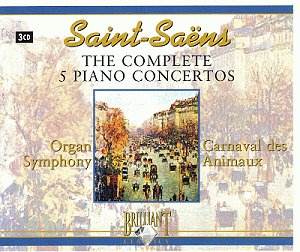 Composer: Gaetano Donizetti
Composer: Gaetano Donizetti
Works: Lucia di Lammermoor
Performers: Joan Sutherland (Lucia), Richard Greager (Edgardo), Malcolm Donnelly (Enrico), Clifford Grant, Robin Donald; The Australian Opera Chorus, The Elizabethan Sydney Orchestra
Recording: Sydney 1986
Label: ARTHAUS Sel. No. 100 242 PAL [2 CDs 145.00]
Donizetti’s Lucia di Lammermoor, a cornerstone of the bel canto repertoire, remains a vital testament to the emotional depth and technical brilliance that the composer conveyed through his characters, particularly the tragic figure of Lucia. Based on Sir Walter Scott’s novel The Bride of Lammermoor, the opera premiered in 1835 and has since captivated audiences with its haunting melodies and dramatic narrative. The 1986 production captured at the Sydney Opera House features the legendary Joan Sutherland, whose name is synonymous with this role, alongside a competent supporting cast and the esteemed Richard Bonynge at the helm of the orchestra.
Sutherland’s portrayal, while undeniably powerful, reveals the complexities inherent in performing such a demanding role in the twilight of a storied career. Her voice, though not as pristine as in her prime, retains a remarkable ring and clarity that serves the character well. The famous mad scene, “Il dolce suono,” showcases her ability to navigate the challenging fioritura with grace, even if there are moments where the agility expected from the youthful Lucia feels strained. Yet, she triumphantly delivers the high notes, a feat that continues to impress and evoke awe. The emotional weight she brings to the role, particularly in the Act 2 duet and the climactic moments, resonates deeply, offering a poignant reminder of her rich legacy.
Bonynge’s conducting offers a solid framework for the performance, characterized by a careful balance between the orchestra and the singers. The Elizabethan Sydney Orchestra provides a lush backdrop, though the orchestral textures occasionally lack the sparkle found in earlier recordings, such as the iconic 1971 Covent Garden performance. The sound engineering in this recording, while competent, does not elevate the orchestration sufficiently; at times, the blend of voices and instruments feels slightly muddled, detracting from the overall impact of the music.
The staging, helmed by John Copley, leans toward a traditional interpretation that, while dependable, suffers from the constraints of its design. The dimly lit sets evoke a moody Scottish atmosphere, but this choice often obscures dramatic action and hampers audience engagement. A notable visual distraction occurs in the final act, where the presentation of an apparition lacks clarity, leading to confusion. While one may argue that this aligns with the opera’s tragic themes, it does not serve the narrative effectively within the visual medium.
While the supporting cast is competent—Malcolm Donnelly’s Enrico presents a strong baritone presence and Richard Greager’s Elgardo offers solid tenor lines—neither delivers the Italianate style that has traditionally defined these roles. This lack of an authentic Italian tenor quality is palpable, especially when one considers the iconic renditions by artists such as Pavarotti and Kraus, whose vocal timbres linger in memory. The competing Pioneer Video recording from the Metropolitan Opera, featuring a younger Sutherland alongside Alfredo Kraus, offers a more vibrant interpretation, showcasing a chemistry that is somewhat muted in this performance.
The overall experience of this DVD is a mixed bag; while Sutherland’s artistry and the orchestration under Bonynge provide substantial musical merit, the production’s visual limitations and the less-than-ideal supporting cast hinder a fully immersive experience. For those seeking to witness Sutherland’s iconic portrayal of Lucia, this recording is an important document of her later years, but it does not eclipse the brilliance of her earlier performances. A more definitive experience can still be found in her previous renditions, which capture the essence of Lucia di Lammermoor at its zenith, where both voice and character align with the fervor that defined her career.



